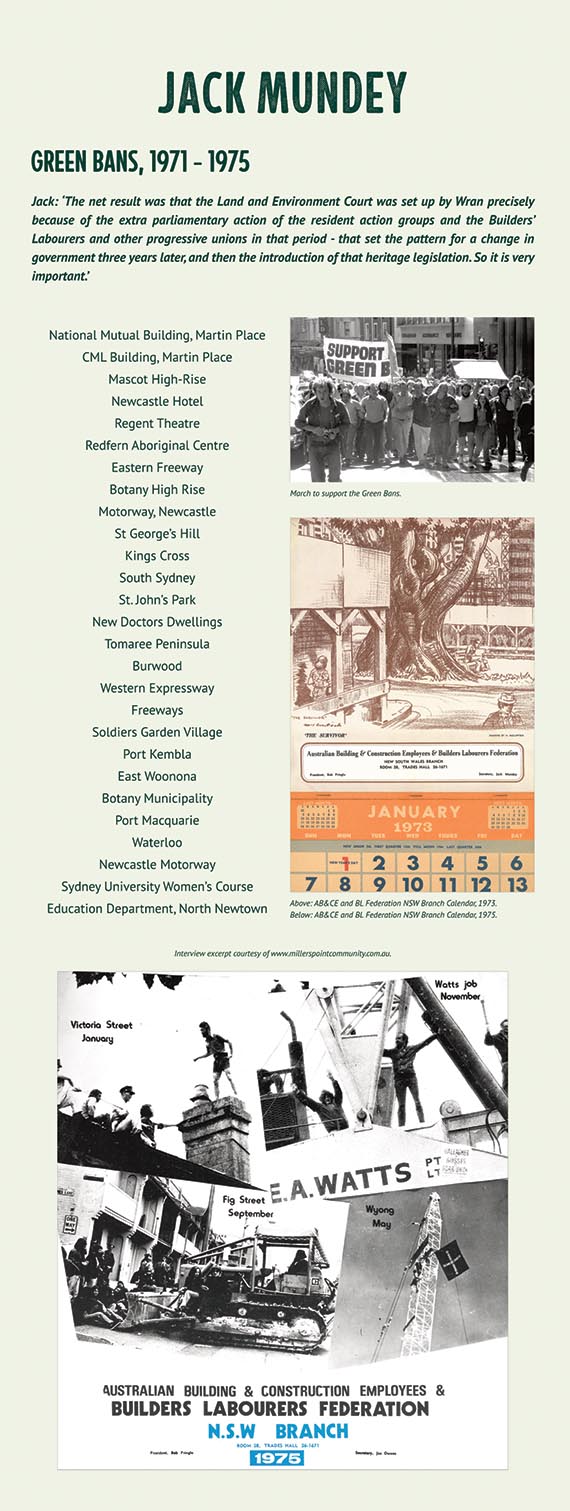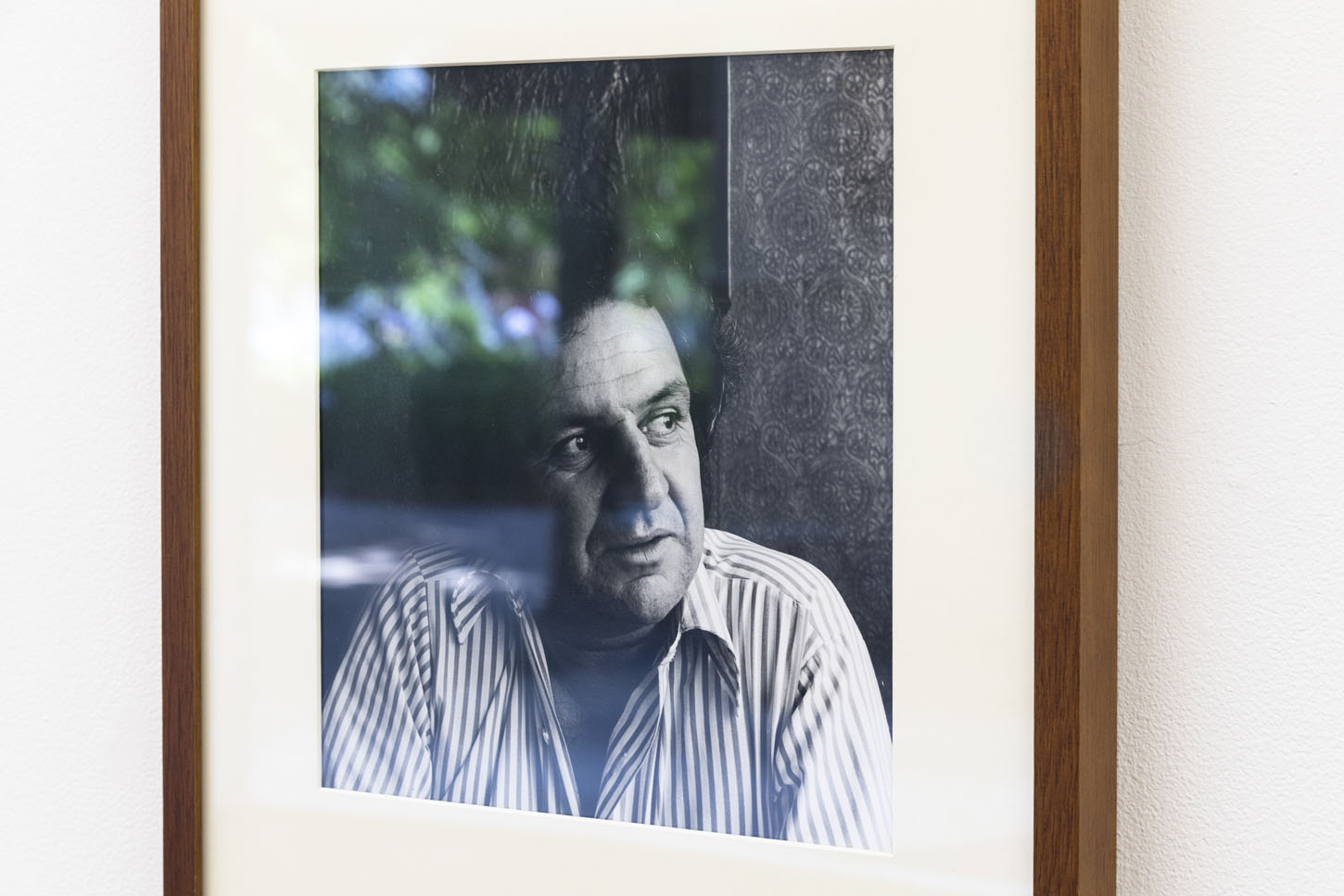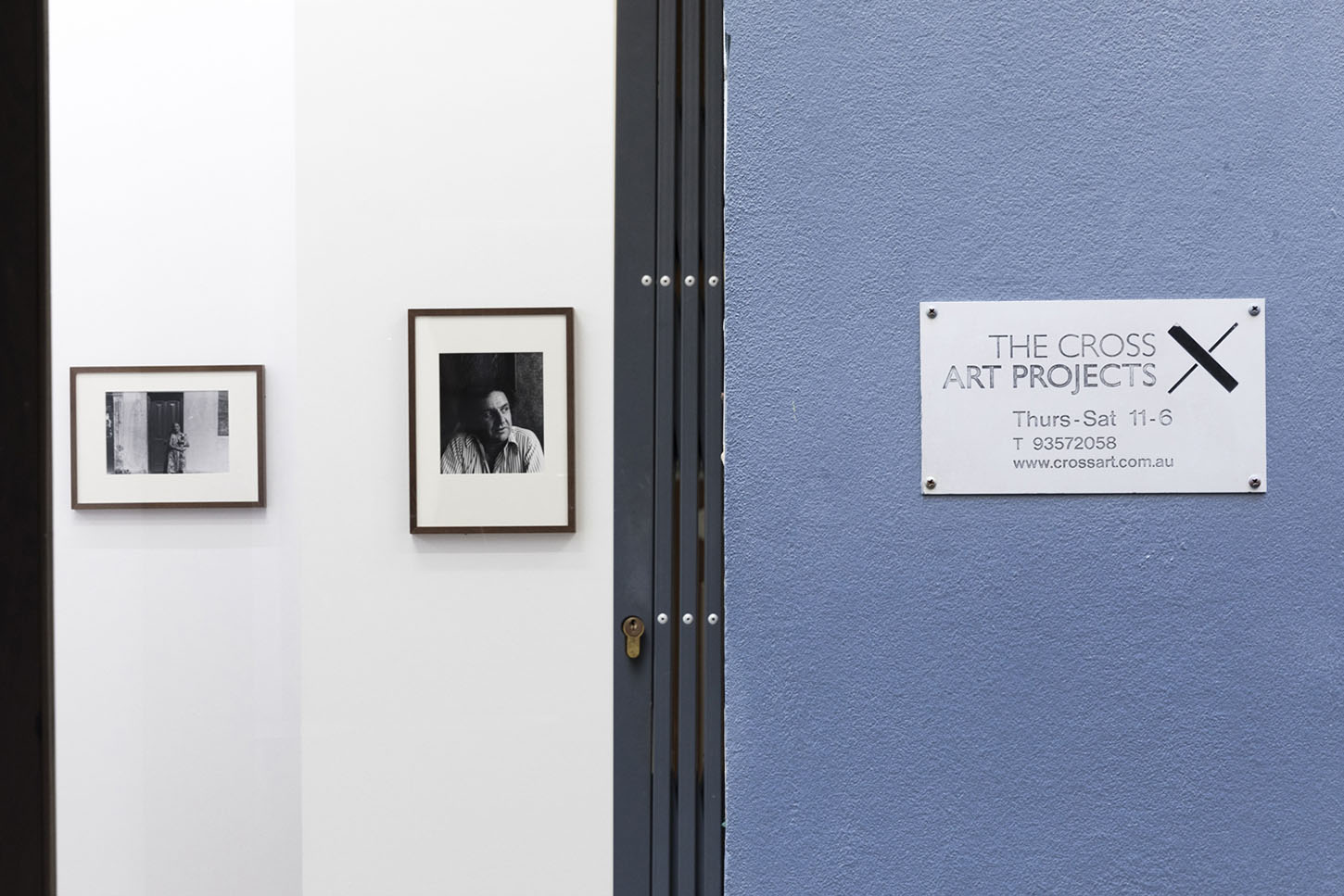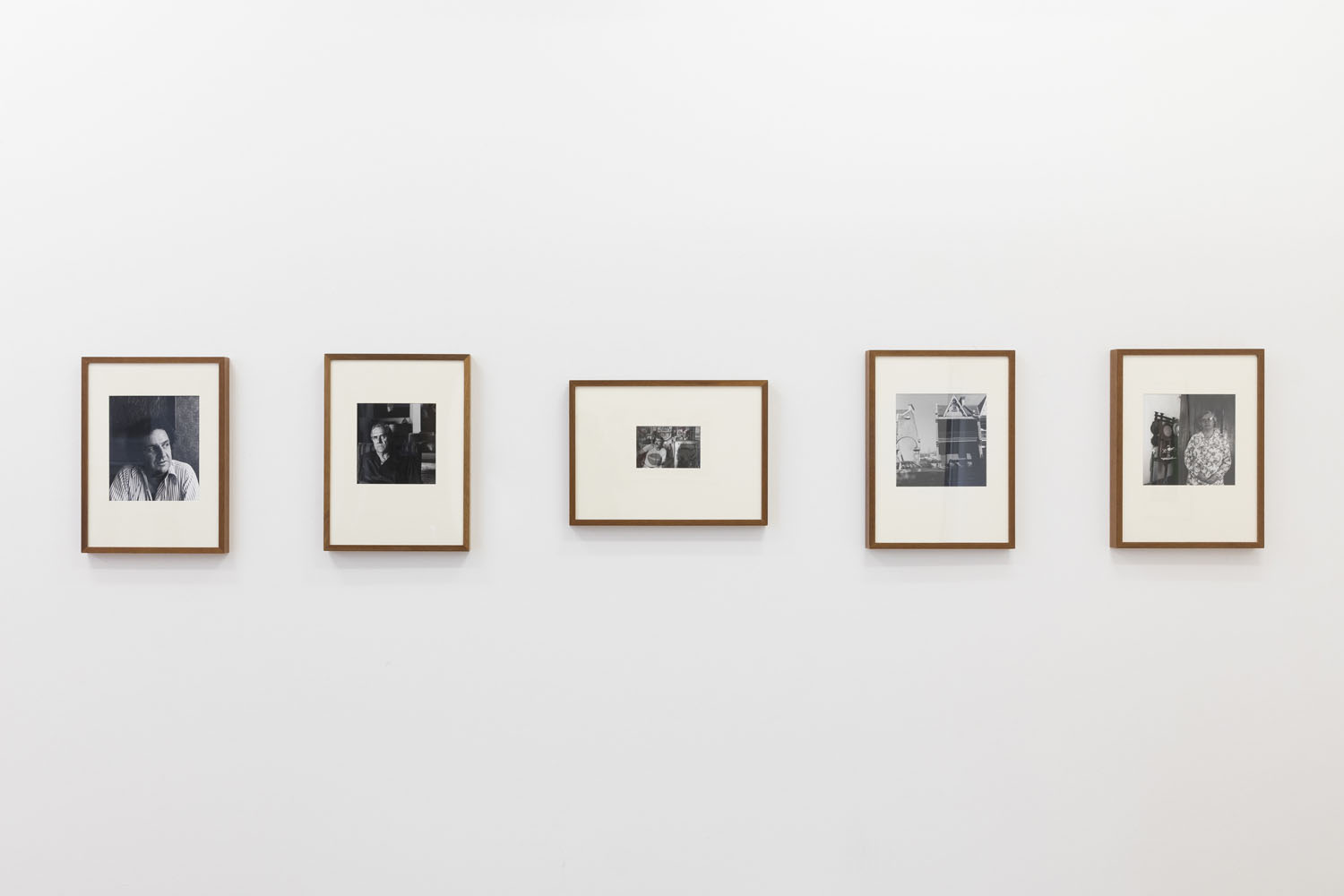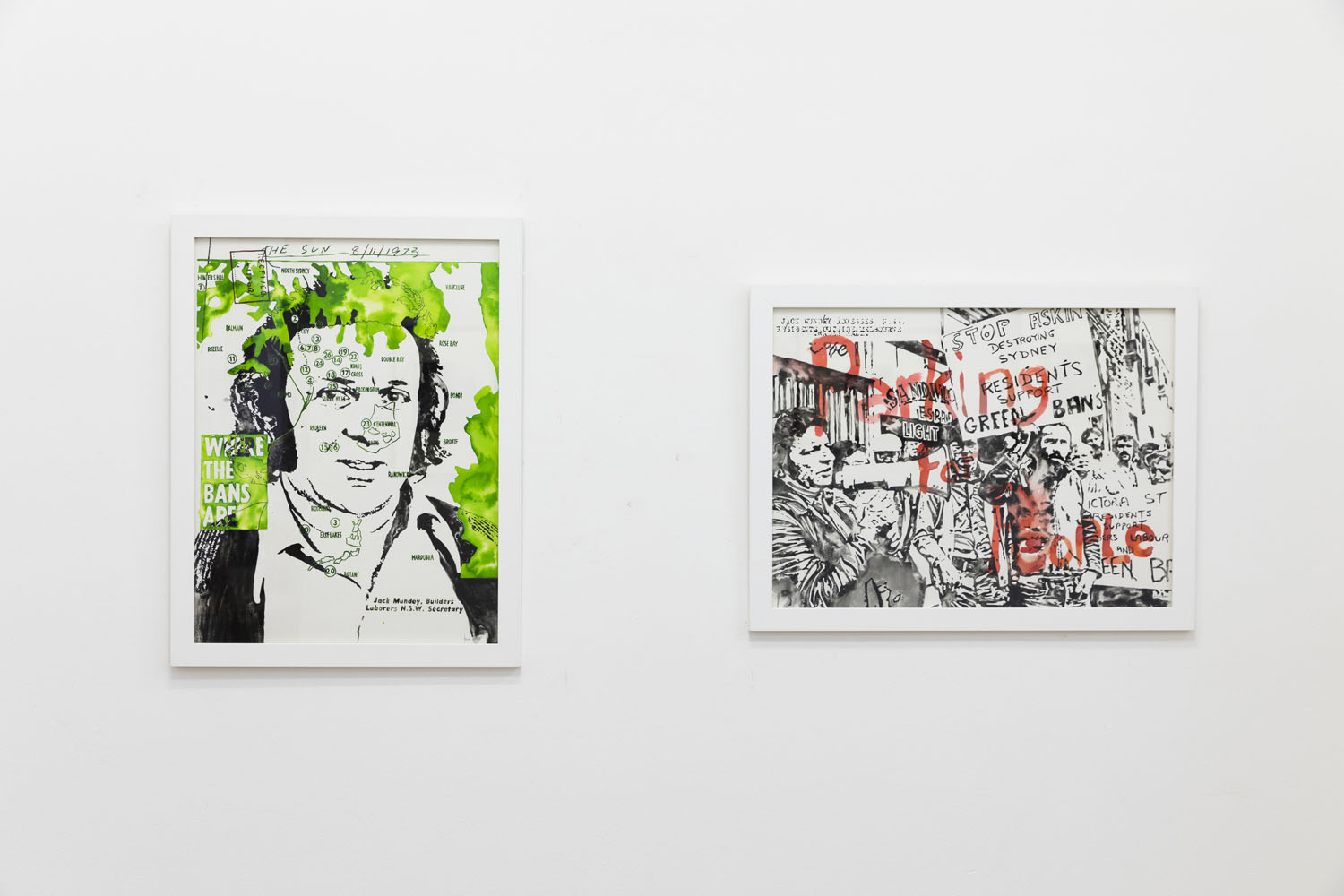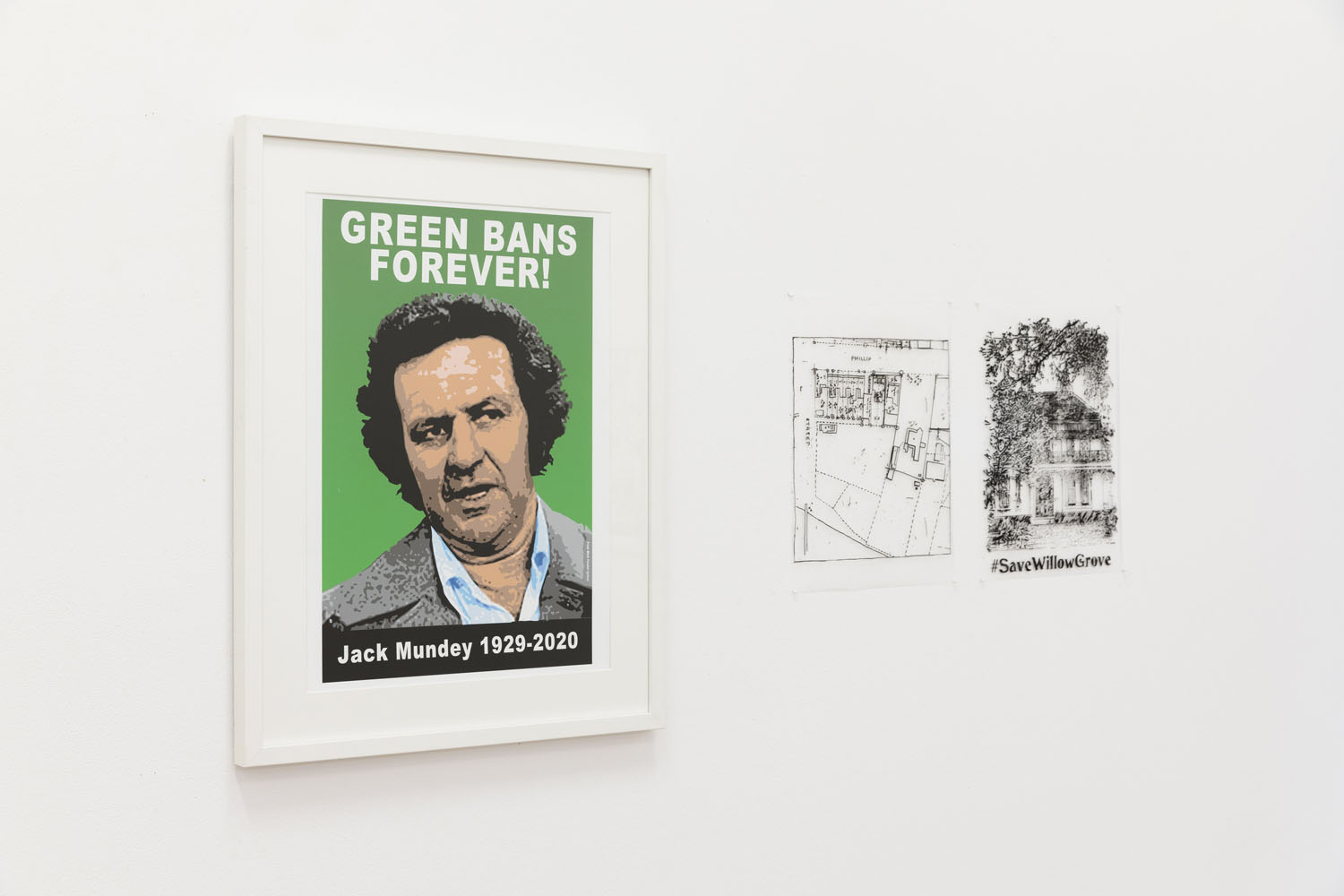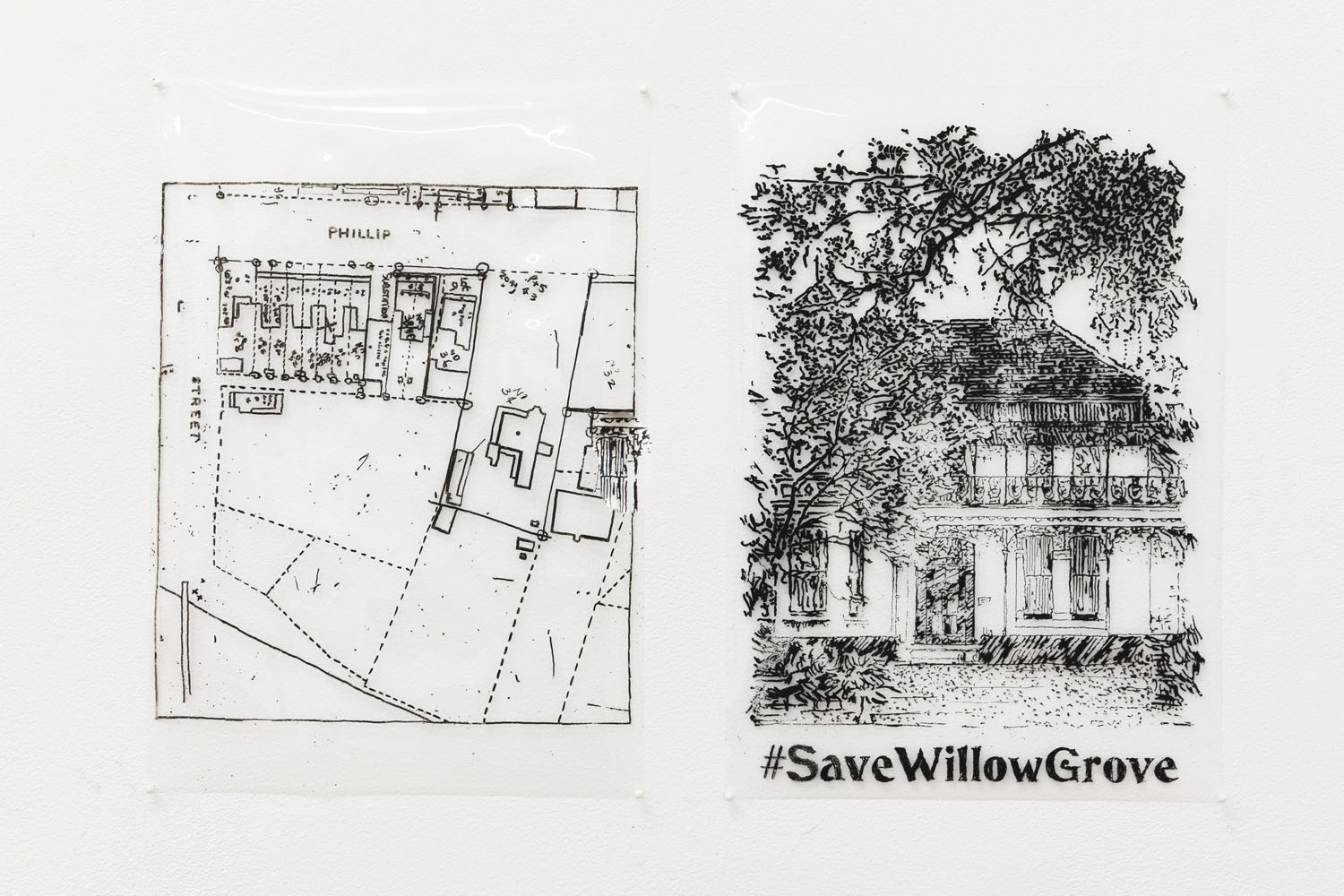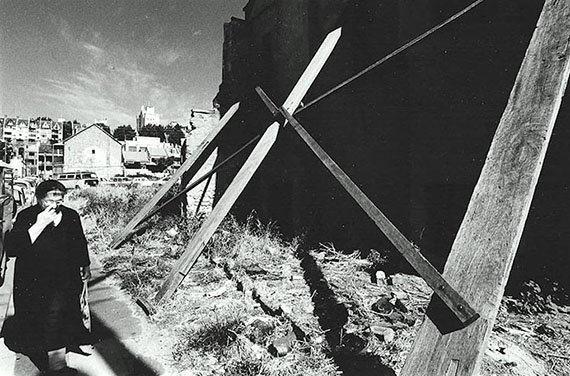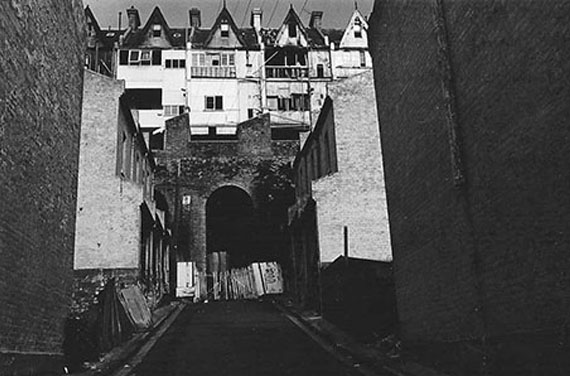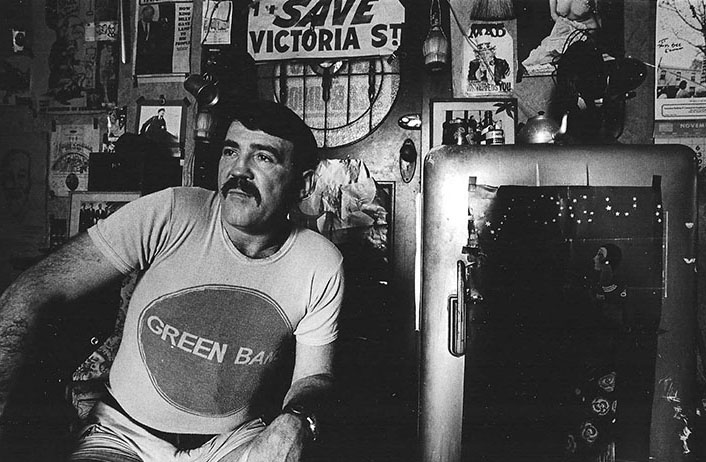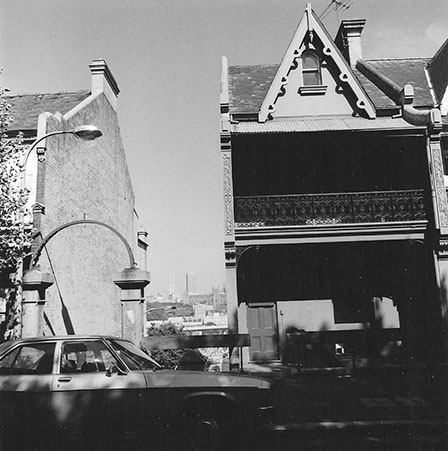The Sydney Morning Herald called them “mere builders’ labourers” and “proletarian town planners” and conservationists were “mere housewives”. Others saw a revolution. Patrick White wrote ‘Civilisation, Money and Concrete’ for The Builders’ Labourer (September 1973), concluding, “Civilisation is not a matter of money and concrete. Civilisation, as I see it, depends on human spirit — human beings — human values.”
In Peter Manning’s summing up, “mere” labourers and housewives created a “rare shift in public thinking”. A photo-book with Peter Manning responding to Marion Hardman’s (Marrison) photographs, Green Bans. The Story of an Australian Phenomenon (commissioned by new Australian Conservation Foundation and launched in 1975), is the gritty fellow traveler to acclaimed Tasmanian wilderness photography.
Discussing Jack Mundey’s concept of green bans as a ‘spatial project’ in an art context implies a link between the union
movement and art, making us aware that both can offer room for alternative thinking and challenge political and economic status. Green bans were an uprising over unequal planning, heritage catastrophe and a plea for housing justice and a right to a voice. They linked kindred spirits, urban con icts, remote conservation and land rights battles.
In June 1971, Mundey secretary of the Builders Labourers’ Federation, led his comrades to the barricades in solidarity with a united group of women from Hunters Hill ghting a ‘Battle to Save Kelly’s Bush’, a remnant on Sydney Harbour. The intersectional alliance with The Battlers was the first of a series that would made history. In a amboyant stroke of genius, Mundey turned a traditional black ban, a form of political strike, into a green ban, reflecting environmental or social significance.
Mundey, a former football player and coach was a non-doctrinaire communist and drew on the rich thought of the civil rights movement and campaigns for land rights, women and gay and lesbian rights. Mundey’s focus was always on working and living conditions in Sydney’s brutal and sometimes corrupt construction industry: he termed it “civilising the industry”. By the time of the second green ban, ‘The Battle of The Rocks’ (December 1971), Mundey correctly said, “the whole world is watching”.
After 4 years, almost 50 green bans, and a collaboration with the National Trust that saved 120 historic buildings, they de-registered the NSW Builders Labours’ Federation. Marion Marrison’s photographs identify key sites and capture union and community leaders — not in lush oil paint but in ne grain documentary photographs – their triumphs and scars still visible.
Re/construction traces some of the complex network of economic and social campaigns that forged the Australian New Left through texts, slogans and songs from unof cial archives and papers donated by Mundey and other ephemera collectors to the Trades Hall Collection. The exhibition arcs from Marion Marrison’s 1975 photographs to current green ban campaigns. In her watercolour painting ‘Practical Democracy - Thank you Jack’, Fiona MacDonald maps green bans sites across Mundey’s face to suggest, simultaneously, a city triumphantly re-claimed and a city being lost. Chips Mackinolty’s ne commemorative poster ‘Green Bans Forever’ is named after Mick Fowler’s green bans anthem.
The years that followed the Green Bans were their direct legacy: “the birth of Australian environmental politics” (Roddewig, Green Bans, 1978). They signed the Woolloomooloo Housing Renewal Project in 1975. Their actions forced Neville Wran’s Labor state government to introduce a Heritage Act 1977 and Environmental Planning and Assessment Act 1979.
In Germany artist Joseph Beuys (and others such as Petra Kelly a witness to the Green Bans) were inspired to set-up the Green Party. The political reformers of the time, Gough Whitlam and Don Dunstan, made the environment, conservation and urban planning mainstream issues. Their successors kept up the momentum: Malcolm Fraser ended whaling and saved Fraser Island, Bob Hawke stopped the Franklin Dam, Bob Carr extended a network of state national parks and John Howard created the Sydney Harbour Trust to rehabilitate former Commonwealth lands.
In regional or remote areas where resources are scarce, restricted homelands, art trails and blockades carry signi cant meaning. Exhibitions and monuments must speak to the present, projecting our shared values and sometimes dramatic changes.
For the 40th anniversary of community and union Green Bans in 2011, artists, curators and historians from The Cross Art Projects, Big Fag Press, Firstdraft Depot and Performance Space summoned the revolutionary voices with the Green Bans Art Walk. Inspirational guides participated, resurrecting other historical vectors and correspondences, notably with art and architectural history.
As the 50th anniversary approaches, the CFMMEU supported by the National Trust placed a green ban on Willow Grove; a grand Victorian house that thwarts “visions” of a new Parramatta CBD. Will historic Parramatta continue to be sidelined and the history of the state and its regions marginalised?
Unrelenting decades of legislative amendments have disabled and overruled transparent consultation, heritage and environment. The right to be heard is remote. Secondary boycott legislation has gagged unions. In Canberra politicians propose a secret commission and stone-wall an independent corruption body. Mundey’s vision for a sane environmental and planning policy, the ght against corruption and the right of the little people to be heard is ongoing.
Artwork Components: Trades Hall
Jack Mundey. Green Bans, 1971-1974 BannersResearch, text and design by Neale Towart and Bill PIrrie
With: Meredith Burgmann, Jo Holder. Paul True. Sources: Jack Mundey papers, Trades Hall Association; Joe Owens and Bob Pringle papers, Noel Butlin Archive, ANU; City of Sydney Archives;
Ephemera and artworks: Collections of Trades Hall, Jack Mundey, Meredith Burgmann and Bill Pirrie.
Green Ban: Save Willow Grove / Save St Georges Terrace, Banner, 2020. Courtesy CFMMEU (Darren Green eld) and North Parramatta Resident Action Group (Suzette Meade). Note: this is half the banner. At the request of Create NSW for the landowner the NSW Government, council workers removed banners. They destroyed the other half of the pair.
Fiona MacDonald, Trades Hall
1. Green Bans Woolloomooloo, 2011. (Tom Uren, John Mulvenna, Joe Owens, Bob Pringle, Gerry Leonard, Mick Fowler, Nellie Leonard, 1975; Wall painting, 19 Harmer St W’Loo, 1974). Source images: found photo and after Marion Marrison, 1974. Big Fag Press, 76.5 x 77cm. Edition 1/25. 2. Green Bans Victoria St, 2011. (Mick Fowler’s Jazz Funeral, 1979; Eviction of 115 Victoria St, 1974, 2011. Source images: Little Book of Green Bans, 1974; Tribune Negative Archive, MLSLNSW; Seaman’s Journal, 1979.) Big Fag Press, 76.5 x 94cm. Edition 1/25.
Shop:
Fiona MacDonald, Practical Democracy - Thank you, Jack, 2020.
Tea towel: Two colour screen print on linen. 50 x 70cm ($35) Image sources: ‘Where the green bans were’ (The Sun, 8.11.1973) and Jack Mundey (from Tribune, 30.11.1972). Silk-screen on linen. Edition 50. $35 each.
Chips Mackinolty, ‘Green Bans Forever’ (after Mick Fowler), 2020. Limited edition prints unframed. Prices: inc GST: A3. Edition of 20. $50 / A2 Edition of 20. $125 / A1 Edition of 5. $220. Digital Print on Ilford Galerie Prestige Cotton Rag Smooth 300gsm. Note: Funds raised go to a Memorial Banner for Jack Mundey
Speakers
Judy Mundey, Wendy Bacon, Meredith Burgmann, Pat Fiske, Neil Towart, Bill Pirrie and more.
Organisations
Special thanks to Trades Hall Association and Unions NSW, CFMEU (Construction), Mitchell Library SLNSW (Tribune photographs), Hazelhurst Art Gallery for kind loan of frames. Printers: Inkwell (banners); Darkstar Fine Art Prints (Chips Mackinolty), Kandos Museum, Kandos NSW. Resident Groups: Groups: North Parramatta Resident Action Group (Suzette Meade) and Save Kings Cross Village. Individuals: Ron Edgar
The Cross Art Projects
Belle Blau, Simon Blau, Phillip Boulten and Susan Gilligan
Green Bans
Website at www.greenbans.net.au
Green Ban Archives 1971-1974 & Woolloomooloo Renewal Project 1975-1981
Marion Marrison
Photographs from Marion Hardman (Marrison) and Peter Manning, Green Bans. The Story of an Australian Phenomenon, Australian Conservation Foundation, 1975. Silver gelatin prints taken in late 1974 and 1975; printed in 1975 otherwise printed in 2011. All are archival mounted on ragboard. Mounted size 406 x 562 mm. The commentary in quotes is from Peter Manning’s 1975 text.Marion Marrison Artist Statement, October 2020:
In late 1973 I was the first photography graduate from the Tasmanian School of Art in Hobart just as the Publications Committee of the Australian Conservation Foundation decided to publish a book documenting Sydney's Green Bans. I had just started exploring and photographing local bushland and was initially reluctant to put that aside for the months it would take to see the Green Bans project completed. Tasmanian environmental campaigners Dr. Richard Jones and Geoff Parr were members of that committee and offered a return plane ticket and the contact of Leigh Holloway at the Sydney branch of the Wilderness Society. It was my second trip to Sydney and the first on my own. Looking at the maps provided, the Green Bans covered an extensive area including green spaces in outer suburbs but it seemed to me that the crux of the bans was a crucial, historical belt of inner Sydney comprising The Rocks, Glebe, Ultimo, Waterloo, Centennial Park, Victoria St and Wolloomooloo. On the northern side of the harbour, was the one that started it all, Kelly’s Bush. The book was conceived around the visual and Peter Manning’s text followed from the photographs. The photographs were undertaken in two trips, the first before Christmas 1973 and the follow up in late January 1974. On both occasions, I had only one opportunity to visit an area or person and had to work with whatever conditions were presented. I had never photographed buildings or streetscapes and often had to make the best of overcast conditions or building facades in heavy shade. Editing after the first trip, I realised the project lacked people and most of the second visit was for the portraits. Jack Mundey agreed to be photographed over lunch at Diethnes, I took one roll of twelve exposures. He looked directly at the camera only twice and moved in two of the others. Unsurprisingly, he was talking and never really still. I prefer this photograph to the one in the book, it seems ‘more’ Jack. The book was launched in 1975 by Dr. Jim Cairns in an exhibition of the photographs at the Arts Council of NSW Gallery in Darlinghurst. The experience of making this work and meeting the remarkable and courageous people of the Greens Bans remains a unique and cherished opportunity.Peter Manning, “When you are “in” Mick Fowler’s home in Victoria St you are in a room about 14 ft square. It is lined with posters, photographs, poems, blow ups, calendars, letters, newsclips, mirrors and memorabilia of any and every kind. All four walls are a living history of Mick Fowler … “
Butler Stairs, joins Victoria St with Brougham St, Wooloomooloo. Looking across The ‘Loo to St Mary’s Cathedral. After Mick’s death a plaque to his memory was placed on the pillar on the right side.
Dedication
Victoria Street and Woolloomooloo were the most brutal of the Sydney Green Bans. We remember Juanita Nielsen, journalist who published NOW from her home at 202 Victoria Street and murdered on 4 July 1975; an Aboriginal girl who died in an intentional fire lit in a Victoria Street squat and seaman and musician Mick Fowler who staged a 3-year sit-in on Victoria Street. At Mick Fowler’s Jazz funeral, they walked down Victoria Street playing his song “Green Bans Forever”.Call Out: 50th anniversary of Community and Union Action, 2021
June 16, 2011, marked the 40th anniversary of the first green ban at Hunters Hill, placed by the then BLF secretary Jack Mundey. In July 2011 the Green Bans Art Walk and the 40th Anniversary of Union and Community action, we researched key sites and sought guidance from respected community authorities respected who turned fragments from an intense 4 year fight into a monument. For example, guide Jim Donovan was a secretary of the Woolloomooloo RAG and his family was the last to leave Rowena Place after Juanita Nielson “disappeared”. Jim showed art walkers the site where his mother organised a tenants’ resistance in the mid-1950s. The called the “Battle to Save St Kilda in Woolloomooloo”, a Georgian mansion converted to a boarding house, the first urban heritage uprising. (Now Cross City Tunnel Office.)In mid-2021 The Cross Art Projects and Trades Hall Collection will collaborate on the 50th Anniversary of the Union and Community Green Bans with a touring exhibition.
The struggle of collective action to make the rich, the greedy and the powerful accountable for a better society, has been a great victory for building workers and something we should be proud of.
Artists
Fiona MacDonald, museum curator and artist, who works with neglected archives layering in watercolour, collage or print items and texts into fantastical and historical memorial works.
Acknowledgements
Speakers: Judy Mundey, Wendy Bacon, Meredith Burgmann, Pat Fiske, Neil Towart, Bill Pirrie and more.Organisations: Special thanks to Trades Hall Association and Unions NSW, CFMEU (Construction), Mitchell Library SLNSW (Tribune photographs), Hazelhurst Art Gallery for kind loan of frames.
Printers: Inkwell (banners); Darkstar Fine Art Prints (Chips Mackinolty), Kandos Museum, Kandos NSW.
Resident Groups: North Parramatta Resident Action Group (Suzette Meade) and Save Kings Cross Village.
The Cross Art Projects: Belle Blau, Simon Blau, Phillip Boulten and Susan Gilligan. Project intern Izzy Maher, Sydney University. Curators: Neale Towart & Bill Pirrie with Jo Holder
Thanks To Fiona MacDonald and Chips Mackinolty for creating the Green Bans Museum Shop.
Links
Green Bans website at www.greenbans.net.au — Green Ban Archives 1971-1974 & Woolloomooloo Renewal Project 1975-80.Green Bans Audios and Films
Rocking the Foundations: A History of the NSW Builders Labourers Federation 1947-1974, 1986. 92 minutes, DVD and 16mm. Produced and directed by Pat Fiske. http://aso.gov.au/titles/documentaries/rocking-the-foundations/clip1/?nojs
Interviews with Jack Mundey
Jack Mundey, ABC 702, 5 February 2010: Podcast of radio interview at: http://www.abc.net.au/local/stories/2010/02/05/2811471.htm
Jack Mundey Interview ABC 1999: Download pdf
Mick Fowler and the Fowlhouse Five: recorded fifteen tracks including “Hindustan” and the “Victoria Street Parade”. For the latter song, Mick changed the lyrics and the title of the classic “Bourbon Street Parade”. In 1979 for Mick Fowler's funeral jazz musicians walked down Victoria St playing 'Green Bans Forever'. See specialist Jazz sites for deleted or out of copyright recordings.
Victoria Street Soundwalk by Sydney Sidetracks (Sarah Barns), Reflects on Victoria St Green Ban and Mick Fowler’s Jazz Funeral: http://sitesandsounds.net.au/soundings/the-unruly-city/victoria-st/
Green Bans: Powerhouse / Parramatta
Lessons from the ongoing fight for the Powerhouse.
1. Arts and cultural policy cannot be made by developers, boards stacked with political cronies, financial consultants and servile planning departments. It requires the input of professionals.
2. Arts and cultural organisations, their boards and directors need a greater degree of independence from ministerial interference.
3. Parliamentary select committees have an important role to play in holding governments to account.
4. Communities, people of knowledge and key trades and professional organisations must be involved.
5. End sham or “nudge” consultations.
6. Reality check: only the Powerhouse building has been saved. The other buildings at Ultimo are up for grabs (including Tram Depot). Only 3 objects are confirmed as remaining at the Powerhouse Ultimo: Locomotive No 1, the Catalina plane, the Bolton and Watt steam engine. Without context, they are reduced to décor.
The Powerhouse Museum Alliance is a group of concerned citizens working to save the Powerhouse Museum in Ultimo. The Alliance includes longstanding benefactors of the museum, former trustees, design and heritage experts and senior museum professionals. https://powerhousemuseumalliance.com/
Save the Powerhouse: Ultimo-based state-wide community campaign: https://www.facebook.com/savethepowerhouse/
North Parramatta Residents Action Group: http://nprag.org/
Exhibitions, fellow-travellers:
1917: The Great Strike, was a grand exhibition at Carriageworks, 2017. The exhibition commemorated the centenary of one of Australia’s largest industrial conflicts.
Lucy Taksa wrote a short history of the Strike as part of the Unions NSW 100th Anniversary commemorations. Download it here
The exhibition brought together historical objects such as union banners, badges and certificates, archival photographs, film and oral testimonies, alongside commissioned artworks by contemporary artists Raquel Ormella, Tom Nicholson and Andrew Byrne, Will French, Franck Gohier and Sarah Contos.






